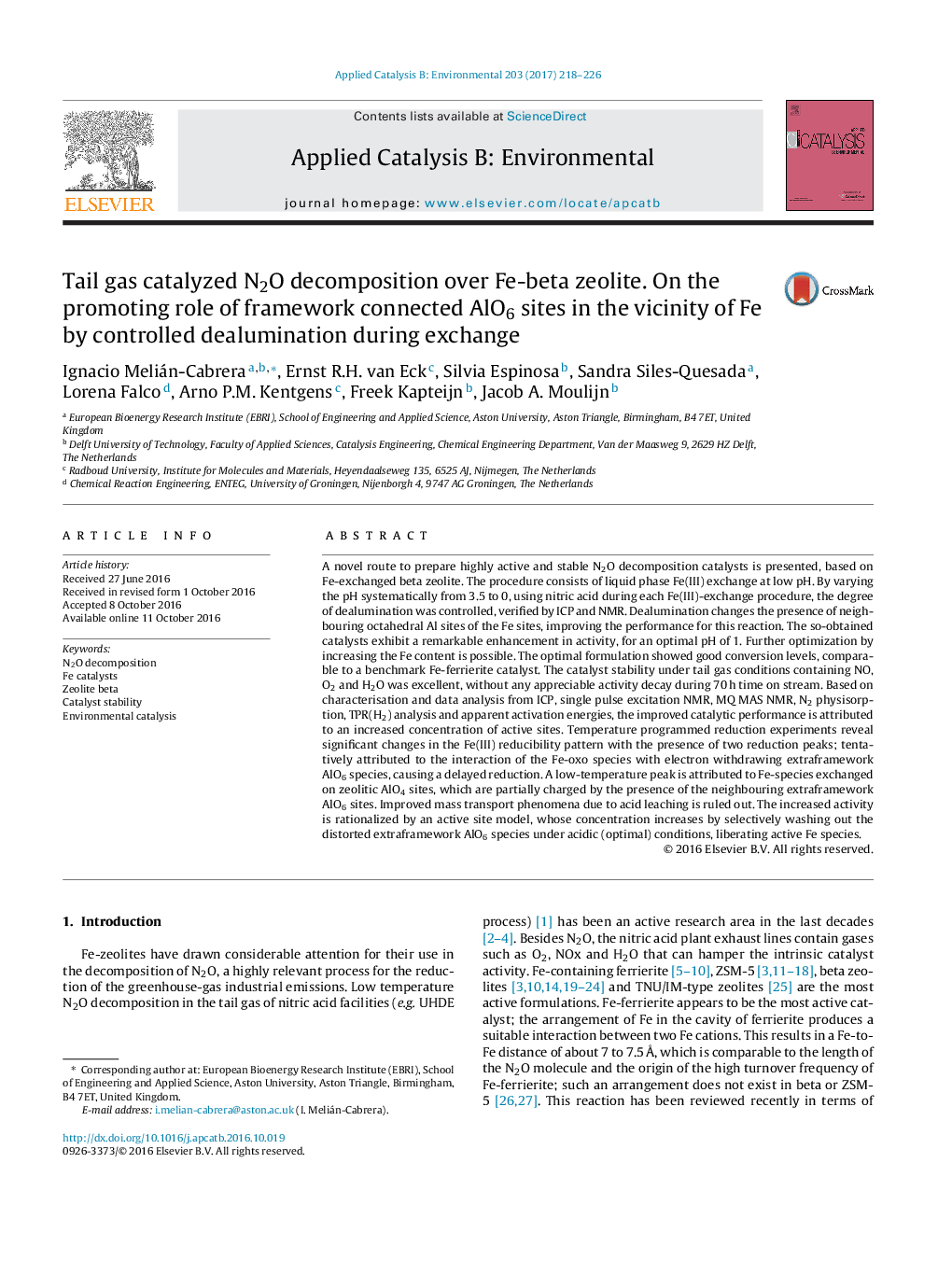| کد مقاله | کد نشریه | سال انتشار | مقاله انگلیسی | نسخه تمام متن |
|---|---|---|---|---|
| 6454444 | 1418817 | 2017 | 9 صفحه PDF | دانلود رایگان |

- New catalyst concept for N2O decomposition has been developed.
- Controlled acidic conditions allows the removal of undesirable Al-species.
- Controlled acidic conditions promote a higher concentration of Fe-O-Al active ones.
- Conversion and stability are comparable to benchmark catalyst.
- Interpretation points out to a higher concentration of active species.
A novel route to prepare highly active and stable N2O decomposition catalysts is presented, based on Fe-exchanged beta zeolite. The procedure consists of liquid phase Fe(III) exchange at low pH. By varying the pH systematically from 3.5 to 0, using nitric acid during each Fe(III)-exchange procedure, the degree of dealumination was controlled, verified by ICP and NMR. Dealumination changes the presence of neighbouring octahedral Al sites of the Fe sites, improving the performance for this reaction. The so-obtained catalysts exhibit a remarkable enhancement in activity, for an optimal pH of 1. Further optimization by increasing the Fe content is possible. The optimal formulation showed good conversion levels, comparable to a benchmark Fe-ferrierite catalyst. The catalyst stability under tail gas conditions containing NO, O2 and H2O was excellent, without any appreciable activity decay during 70Â h time on stream. Based on characterisation and data analysis from ICP, single pulse excitation NMR, MQ MAS NMR, N2 physisorption, TPR(H2) analysis and apparent activation energies, the improved catalytic performance is attributed to an increased concentration of active sites. Temperature programmed reduction experiments reveal significant changes in the Fe(III) reducibility pattern with the presence of two reduction peaks; tentatively attributed to the interaction of the Fe-oxo species with electron withdrawing extraframework AlO6 species, causing a delayed reduction. A low-temperature peak is attributed to Fe-species exchanged on zeolitic AlO4 sites, which are partially charged by the presence of the neighbouring extraframework AlO6 sites. Improved mass transport phenomena due to acid leaching is ruled out. The increased activity is rationalized by an active site model, whose concentration increases by selectively washing out the distorted extraframework AlO6 species under acidic (optimal) conditions, liberating active Fe species.
121
Journal: Applied Catalysis B: Environmental - Volume 203, April 2017, Pages 218-226